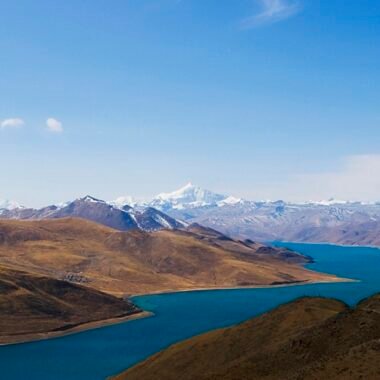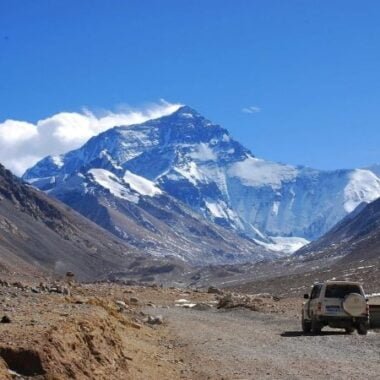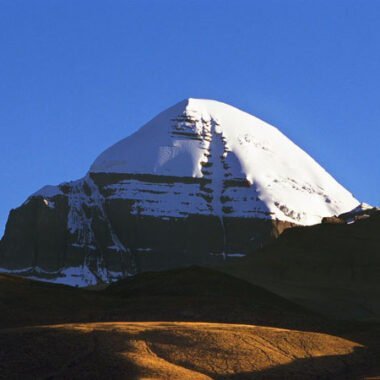How to Travel to Tibet from the US
Traveling to Tibet from the US is a journey filled with cultural richness and breathtaking landscapes. This guide will walk you through…
Traveling to Tibet from the US is a journey filled with cultural richness and breathtaking landscapes. This guide will walk you through everything you need to know to plan your trip, from obtaining the necessary permits to choosing the best routes.
1. Obtain a China Visa
Before traveling to Tibet, US citizens must first obtain a visa to enter China. This can be done at any Chinese embassy or consulate in the US. You’ll need to provide your passport, a completed application form, a recent passport-sized photo, and a copy of your travel itinerary.
Tips: As Tibet is still a sensitive word in politics, it is adivsed to not mention it in the visa application. This shall be a L visa for tourism. More info can be found at China Visa Information | How to apply for a Chinese Tourist Visa – Tibet Tour Experts TIWTS.
2. Apply for a Tibet Travel Permit
In addition to a Chinese visa, you’ll need a Tibet Travel Permit to enter Tibet. This permit can only be arranged through a registered travel agency in China. Once you book your tour to Tibet, your travel agency will handle the permit application on your behalf. The permit is usually issued about a week before your entry into Tibet. More information can be found at Tibet Travel Permits: A Guide for Travelers – Tibet Tour Experts TIWTS.
Note: We promise full refund if we fail to obtain the Tibet Travel Permit for you due to our reasons.
3. Choose Your Entry Point
There are several entry points into Tibet from mainland China:
- Beijing: Fly from Beijing Capital International Airport (PEK) to Lhasa Gonggar Airport (LXA).
- Chengdu: Chengdu Shuangliu International Airport (CTU) offers the most frequent flights to Lhasa.
- Xi’an: You can also fly from Xi’an Xianyang International Airport (XIY) to Lhasa.
- Train: There are trains to Lhasa from many cities in China like Beijing, Chengdu, Xi’an etc. Qinghai-Tibet Railway refers to that from Xi’ning to Lhasa, which is also the most scenic part of the train journey. Due to the high demand of the soft sleeper tickets, it is necessary to book the train as early as possible.
4. Best Time to Visit Tibet
Generally speaking, the best time to travel to Tibet is from April to October. During these months, the weather is mild, making it ideal for exploring Tibet’s high-altitude landscapes and cultural sites. However, as it is much less crowded in winter, more and more tourists choose to travel in the low season to experience a more serenity world of Tibet.
5. Acclimatization Tips
Tibet’s average altitude is around 4,000 meters (13,000 feet). To avoid altitude sickness, consider spending a couple of days acclimatizing in Lhasa before heading to higher altitudes. Drink plenty of water, eat light meals, and avoid strenuous activities in the first few days.
6. Pack Accordingly
When traveling to Tibet, pack layers of clothing to adjust to the varying temperatures. Essential items include:
- Warm clothing: Even in summer, temperatures can drop significantly.
- Sun protection: The sun is strong at high altitudes.
- Personal medication: Bring any necessary medications, especially for altitude sickness.
7. Take a Guided Tour
Independent travel in Tibet is not allowed for foreign tourists. You’ll need to join an organized tour, which can be a private or group tour. For personalized experience, a private tour is usually recommended, so that you can travel at your own pace, get one-to-one service from the experienced local tour guide and visit places you are most interested. This is also the safest way to explore the region, as your guide will be knowledgeable about local customs, weather conditions, and regulations.
8. Cultural Sensitivity
Tibet has a rich cultural heritage that should be respected. When visiting monasteries and other religious sites, dress modestly, ask for permission before taking photos, and refrain from touching religious artifacts.
Conclusion
Traveling to Tibet from the US requires careful planning and respect for the region’s unique cultural and environmental conditions. By following these steps, you’ll be well-prepared for an unforgettable journey to the Roof of the World.











